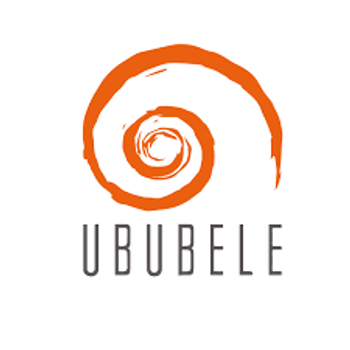
The Psychoanalytic Tradition in American Psychiatry: The Basics
The long-lasting impact of psychoanalysis on American psychiatry should continue to be taught and celebrated, if only as a testament to the human ability to seek understanding and find meaning in man’s suffering.
HISTORY OF PSYCHIATRY
Mr. Ruffalo is Affiliate Assistant Professor of Psychiatry and Adjunct Instructor of Social Work at the University of South Florida in Tampa, Florida. He is a psychoanalyst in private practice.
The history of psychiatry is one marked by major vacillations between psychodynamic and neurobiological perspectives. The latest paradigmatic shift, occurring roughly between the 1970s and 1980s, has placed contemporary psychiatry squarely within the realm of biological medicine, emphasizing genetics, neurochemistry, and biological investigation. The psychiatric journals no longer lead with articles on unconscious processes and transference neuroses but rather with studies on psychopharmacology and psychiatric genetics. The modern psychiatrist may refer patients for psychotherapy, but he himself may practice it rarely, if at all. This shift towards a biological approach has been variously attributed to the increasing influence of managed care, the advent and widespread popularity of psychotropics, and the progressive medicalization of mental distress, among other reasons.
I have found in teaching the history of psychiatry to psychiatry residents that few recognize the extent to which the profession was influenced by psychoanalytic thinking. Many early career psychiatrists are under the faulty impression that psychoanalysis has always been divorced from psychiatry, practiced within psychology and social work but never within the psychiatric mainstream. There is, it seems, little recognition of the fact that as recently as 30 years ago, many of America’s most prominent psychiatrists were psychoanalysts themselves, trained in the heyday of psychoanalytic psychiatry and retaining a dynamically informed perspective on mental illness. Seasoned psychiatrists-those educated in what I call the “golden era” of psychiatry, the 1950s and 1960s-learned to harness the great power of both psychotherapy and the burgeoning art of psychopharmacology, employing both in complementary fashion. Sadly, these psychiatrists are dwindling as the years go by.
The earliest days of psychoanalysis in the US are marked by its lukewarm reception by organized psychiatry, which maintained a Kraepelinian biological persuasion until about the 1930s. Most psychiatrists in this era were asylum keepers; very few were involved in outpatient practice, which was generally restricted to neurologists. This point is an important one, as it was the psychoanalytic revolution in psychiatry that opened up the field to the private practice setting and to the treatment of less seriously ill patients. Prior to the introduction of psychoanalysis in the US, most psychiatrists were trained in the “German school” of psychiatry, which historically emphasized the treatment of psychotically disturbed and hospitalized patients.
For a period of time beginning in 1924, the American Psychoanalytic Association held its annual meetings at the same time and in the same city as the much larger American Psychiatric Association (APA), attempting to lure new membership. In the early 1930s, the American Psychoanalytic Association began lobbying the APA to officially recognize the psychoanalytic approach to psychiatry. By this time, psychoanalysis had become increasingly popular in Europe, and various schools of psychoanalytic thought were developing across Europe and the US. Although initially resistant to Freudian ideology, American psychiatry gradually came to embrace psychoanalysis, and the fields became aligned as one for roughly the next 60 years.
Psychoanalysis reached its zenith in the late 1950s and early 1960s. More than half of psychiatrists during this time were either formally trained in psychoanalysis or psychoanalytically-inclined in their orientation. All of the major US psychiatry departments appointed psychoanalysts as chairmen. Case Western Reserve in Cleveland, the University of Pittsburgh, UC San Francisco, the Johns Hopkins University, Penn, Columbia, Stanford, Harvard, and Yale each saw psychoanalysts ascend to their department chairs. By 1960, virtually every major American psychiatry position in academia was occupied by a psychoanalyst.1
The leadership of the APA reflected this shift towards the psychoanalytic paradigm. In 1924, the first psychoanalytically-inclined psychiatrist, William A. White, was appointed president of the APA, and the next 58 years saw an almost unbroken series of psychoanalyst presidents of the APA.
Importantly, the practice of psychoanalysis in the US was restricted to physicians; it was only in the 1980s that psychoanalytic training institutes began admitting social workers and psychologists following a federal antitrust lawsuit brought by the American Psychological Association. Whereas psychoanalysis in Europe and elsewhere was practiced from its very early days by lay analysts, its practice in the US was for many years limited to psychiatrists. This served only to reinforce the seemingly unbreakable bond between psychoanalysis and American psychiatry held for the majority of the 20th century.
The 1950s and 1960s saw for virtually the first time the application of psychoanalysis for persons previously considered inaccessible to psychoanalytic treatment due to the nature of their problems. Freud originally believed psychotic patients to be incapable of developing a transference reaction and thus poor candidates for analytic treatment. As psychoanalysis gained power and influence, its scope broadened to schizophrenia, “manic depression,” and other serious psychiatric conditions. Psychoanalysis was soon being applied to nonpsychiatric problems, as well-such as effects of war, racism, and other social ills.
Psychoanalytic hospitals opened at Chestnut Lodge and Sheppard Pratt, McLean Hospital in Boston; Austen Riggs in Stockbridge, Massachusetts; and the Bloomingdale Insane Asylum in New York City. The Menninger Clinic in Topeka, Kansas, founded in 1925 by Drs. Charles F. Menninger and Karl and William Menninger (his sons), became the leading American institution for psychiatric treatment for five decades.
Psychiatry at this time was attracting the best and brightest medical students, due in large part to the prestige afforded to it by Freudian psychoanalysis coupled with recent groundbreaking discoveries in the field of psychopharmacology by Nathan S. Kline and others. It was an exceptionally exciting time to be a psychiatrist-the possibilities of psychoanalytic understanding and drug treatment seemed endless. In the 1960s, 66% of American psychiatrists were in private practice, up from a mere 8% in 1917.1
In 1962, psychoanalyst Harry Stack Sullivan authored the book
A number of factors contributed to the eventual downfall of the psychoanalytic reign in the 1970s and 1980s, most notably rapid advances in psychopharmacology, the increasing influence of managed care, and a trend towards the medicalization of problems once considered psychological or psychosocial in their origin. Additionally, critics of psychoanalysis contend that the discipline became increasingly dogmatic in its approach and expanded beyond its proper scope. The antipsychiatry movement of the 1960s further damaged the reputation of psychoanalysis as a branch of psychiatric medicine.
Despite psychiatry’s shift back towards a more biological persuasion, psychoanalysis continues to be practiced within certain corners of psychiatry, and also within social work and clinical psychology. It remains the treatment of choice for some personality disorders and other chronic, unrelenting psychiatric syndromes. Recent research has shown psychoanalytic psychotherapy to be as or more effective than other forms of psychotherapy for a range of psychiatric conditions.2
The long-lasting impact of psychoanalysis on American psychiatry should continue to be taught and celebrated, if only as a testament to the human ability to seek understanding and find meaning in man’s suffering.
References:
1. Shorter E. A History of Psychiatry: From Era of the Asylum to the Age of Prozac. Hoboken, NJ; John Wiley & Sons, Inc: 1997.
2. Summers RF, Barber JP. Psychodynamic Therapy: A Guide to Evidence-Based Practice. New York; The Guilford Press: 2009.
Newsletter
Receive trusted psychiatric news, expert analysis, and clinical insights — subscribe today to support your practice and your patients.

















